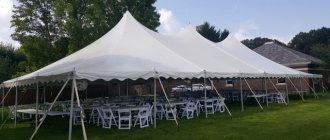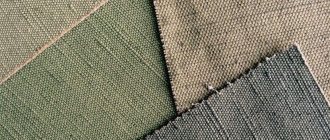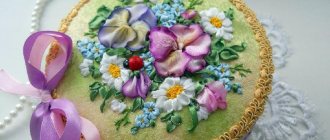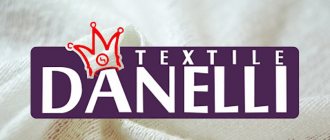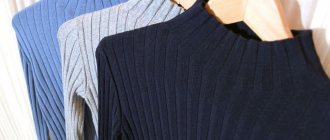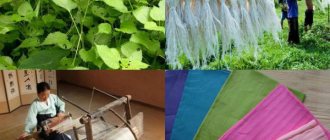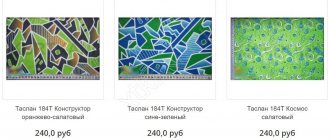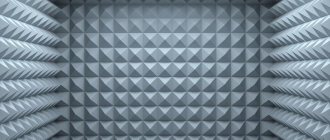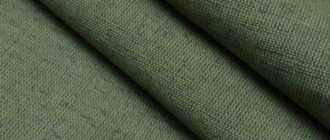Briefly - general requirements
All materials that are used to make awnings and various canopies must, to one degree or another, meet certain requirements. If we briefly list the special properties of such fabrics, we will get something like this.
- Durability . The very first characteristic is explained by the fact that covering materials must perform a protective function. The word strength means the ability to withstand mechanical loads without any damage - stretching, punctures, sharp gusty winds, and so on.
- Wear resistance . The longer the service life of such materials, the better. This reduces the cost of both time and money for changing materials.
- Resistance to rot . Since awning fabrics are used in difficult conditions, they must have the ability to resist bacterial growth and rot.
- Waterproof . Most often, awnings are used precisely to provide protection from precipitation and water.
- UV resistance . The alternation of moisture and the aggressive action of ultraviolet radiation has a detrimental effect on many materials and very quickly leads to their wear.
Canvas group
Tarpaulin is one of the most common materials for making awnings. Despite the abundance of new materials, tarpaulin is still not losing its position in many industries where awnings or external protection may be needed.
Tarpaulin is a rough, dense fabric made from natural fibers.
Naturalness is the main difference from other awning materials that are made on the basis of polymers. By the way, this very quality can be considered an insignificant drawback, since in natural fiber, over time, favorable conditions are created for the development of putrefactive bacteria.
Special properties
Tarpaulin has a number of properties that are indispensable for awning fabrics.
- Wear resistance . Successfully withstands most types of mechanical loads - torsion, compression, bending, stretching, friction and so on.
- Durability . In addition to wear resistance, it also withstands chemicals well, which greatly increases its service life.
- Air permeability . Thanks to the ability of tarpaulin to pass air under pressure, it is possible to create a favorable microclimate. This is important for many industries, including agriculture.
- Low hygroscopicity . The fabric does not absorb water vapor from the air and the environment; accordingly, the covered materials remain dry.
- High density . The value of this parameter for tarpaulin ranges from 300 to 600 g/m2, which is ensured by the thickness of the threads and the tightness of their fit to each other.
The main color of this fabric is khaki. However, the color range has been expanded by its numerous shades - camouflage, light green, sand, etc.
Usage
In addition to various household, private needs and tourism, awnings made from tarpaulin fabrics are often used in industries such as construction and agriculture. With their help, temporary building structures (scaffolding), buildings for workers, unfinished and unfinished buildings, building materials, etc. are protected.
In agriculture, there is a need to shelter the harvested crop, machinery, equipment and other equipment that cannot be delivered to the garage and is stored outdoors.
What types of awning covers for passenger cars are there? Read our review. This article explains the benefits of purchasing Glasscore office partitions.
Are you planning to purchase an awning for a gazebo? Here: https://tech-gate.ru/drugaya-produkciya/tenty/po-sfere-ispolzovaniya/dacha-otdykh-turizm/dlya-besedok-i-verand-assortimen.html - you can make your choice.
Production
The basis for creating tarpaulin is cotton and linen . jute is also added to the weaving . It contains a large amount of lingin, an element responsible for fiber stiffness.
The ratio of linen and cotton fabric composition can be different for different manufacturers - 40 to 60, 50 to 50 or 60 to 40 percentage. Sometimes 100% of a particular material is used.
All kinds of impregnations that are used for processing significantly improve the existing properties of the fabric and give it additional characteristics.
- VO - waterproof . For use in areas characterized by high humidity. Special types of such impregnations can also be used - SKPV (light-resistant, combined fabric with increased water resistance), PV (increased water resistance).
- OP – fire retardant . This property helps to withstand high temperatures and even open fire for a certain period of time. By analogy with the previous type of impregnation, there is also a special light-resistant combined impregnation SKOP.
- PP – anti-putrefactive . Since tarpaulin is a natural material, it needs protection from the harmful effects of all kinds of microorganisms that cause decay processes. Variety - SKPP.
The cost of tarpaulin in relation to modern fabrics is low. Depending on the composition, impregnation and some other factors, the price per linear meter ranges from 55 to 200 rubles .
Types of awning fabric
There are three types of materials for the production of awnings.
- Tarpaulin. The production of the fabric begins with a woven base, which is made from polyethylene tapes. The strips are woven like a matting, which forms a dense and light fabric. To make it moisture-proof, PE film is rolled onto the surface on both sides. Thanks to this, the canvas is impenetrable, smooth, and shiny. Light-stabilizing particles are embedded in the surface film, which protect the material from destruction under the sun. And tinting additives that add color. When choosing, it is worth considering that manufacturers mark fabrics of different densities with a standard color. The most durable awning fabric from Tarpaulin is black on the outside and gray on the inside, its density is 280 g/m2, and the service life in the sun is three years. The least durable blue one, with a density of 90 g/m2, is designed for outdoor use for up to a year.
- PVC. PVC and Tarpaulin canopies have an identical base, made of polymer fibers using the weaving technique. Differences are due to surface coating. For tarpaulin shelters it is made of PE film, for PVC it is made of polyvinyl chloride. This is a more durable, wear-resistant and resistant to external factors coating, which looks and feels like rubber. It is recommended to choose it in cases where the shelter will be subject to regular mechanical loads.
- Oxford. Woven awning material made from fine synthetic fiber. It is based on nylon or polyester thread woven using the Panama weave method. The arrangement of the fibers makes the fabric exceptionally strong and lightweight. To prevent permeability, it is coated with polyurethane impregnation. The resulting material is lightweight, moisture-resistant, soft and non-rusting, folds compactly, and is less susceptible to rupture compared to Tarpaulin.
Depending on the material of manufacture, the presented types of awnings receive the specified characteristics.
PVC group
Such fabrics are a material based on a fairly dense woven polyester mesh, which is covered on both sides with a thin and durable layer of polyvinyl chloride (PVC).
Properties
Due to their composition, PVC fabrics are very resistant to tearing and stretching. In addition, the material is able to retain its shape even under the most difficult operating conditions. This property is much more pronounced than, for example, that of the tarpaulin group of fabrics.
In addition, PVC awning materials have the following characteristics:
- resistance to UV rays and no fading;
- repel water;
- insensitive to aggressive environments, therefore durable;
- there are no changes with frequent and strong changes in ambient temperatures (from -30 to +70°C);
- prevents dirt and stains;
- service life is about 5–7 years.
The average cost of such awning fabrics is slightly higher than textile ones, but is also not too high. The price of one square meter of fabric for PVC awnings ranges from 160 to 320 rubles .
PVC awning
The PVC awning is a two-layer composite canvas with a waterproof polyvinyl chloride coating, treated edges and installed fasteners. This synthetic base material has good protective properties that retain heat during concrete, roofing and facade work. The awnings are made using a special “warm air” technology using the welding method, which ensures the tightness of the seams.
The dimensions and configuration of awnings can be either standard or special (when manufactured to order), so such awnings have the widest scope of application.
They are waterproof, have high mechanical strength, the ability to retain their shape under prolonged deforming loads, withstand a wide temperature range, and are durable.
Rubberized group
One of the most popular methods of protection against water is rubberized fabric. The basis can be almost any natural, synthetic or combined material.
Thanks to rubber, which is applied to the base in various ways, in addition to the ability to retain water, the advantages of such fabrics also include special resistance to a variety of household chemicals, elasticity and great strength.
The only drawback of such materials is that they are not very puncture resistant. However, special additives and the latest production methods practically eliminate this disadvantage, so rubberized fabrics remain one of the main materials for creating awnings.
Production
Depending on the final characteristics required (including gas-tightness), rubberization can be done on one or both sides. There may also be different varieties of rubber applied, which may simply have general or special properties.
There are several ways to produce such awning fabrics.
- Rubberization by impregnation with a special adhesive composition made on the basis of rubber (rubber). This composition contains volatile substances that evaporate during the drying process. As a result, the rubber is tightly attached to the fibers of the base material.
- Coating on a calender (a special machine with rollers for continuous passage of sheet materials).
- Calender lining.
- Rubberization with vulcanization or impregnation with photopolymer is possible.
Rubberized awning fabrics, depending on the quality and final characteristics, can have different prices. The price range is quite wide - from 80 to 300 rubles per linear meter .
This material is sold in rolls 90–100 cm wide. The cost also depends on the strength, which can range from 150 to 750 g/m2.
Types of awnings and features of their use
January 29, 2021, 11:46 am
Awnings are inexpensive, universal materials that cover building materials, cars and cottages. They are often impregnated with water-repellent and fire-resistant compounds and effectively protect the objects covered by them from moisture and fire.
There are different types of awnings, each of which is characterized by its own characteristics. Below is a brief description of several types of awnings, which you can purchase in the store https://mirtentov.ru.
- The most widespread is a canvas or sailing awning, the average density of which is from four hundred and fifty to five hundred and fifty grams per square meter. It is made from cotton, linen or half-linen tarpaulin, impregnated with a waterproof and fireproof compound. Such an awning easily tolerates temperature fluctuations, is durable and inexpensive.
- Polyvinyl chloride awning, the average density of which is from six hundred to six hundred and fifty grams per square meter. It has fairly high strength and is always blue in color. The main advantage of such an awning over analogues is its increased water-repellent properties. In addition, it easily withstands exposure to ultraviolet and infrared radiation, as well as various chemicals. However, in the cold the PVC awning becomes very rough. In addition, it is quite expensive.
- An oxford tent sewn with lavsan thread, the average density of which is from one hundred seventy to two hundred and ten grams per square meter. This type of awning has low weight, high water-repellent properties and durability. Painted in a variety of colors.
- Tarpaulin awning, the average density of which is from ninety to one hundred and eighty grams per square meter. It is inexpensive and lightweight, making it suitable for covering large areas. However, this material requires extremely careful handling. It is not able to withstand frequent and prolonged use.
- Insulated awning. It is made from all the materials that are used to make the types of awnings described above, but differs from them in the presence of insulating material inside. Isolon or synthetic winterizer of varying thicknesses is used as insulation. The weight of such an awning depends on the characteristics and amount of filler used. An insulated awning is indispensable during frosts. It reliably protects the objects covered by it from temperature changes.
Acrylic group
Like any fabric, acrylic is made from fibers. Continuous acrylic filaments are obtained from acrylonitrile, a special petrochemical product.
Key Features and Benefits
- Very high resistance to direct exposure to ultraviolet rays.
- Waterproof and also moisture repellent.
- No burnout. This is ensured by the fact that the fibers are dyed in their “raw” form, before the fabric is made.
- Excellent strength characteristics and no deformation during long-term use.
- Protected from dirt and wrinkle formation.
- Low thermal conductivity, which allows you to maintain a certain microclimate for covered materials.
- Wide temperature range for use – from -35 to +55°C.
- The fabric does not interact with most household chemicals.
- Acrylic fibers resist the formation of mold and mildew, and are also inedible to moths and parasites.
Example - materials from Sunbrella
This American company has been producing synthetic fabrics for awnings, awnings, covers and much more for about half a century. One of the most popular names is Sunbrella Plus fabric, which is made from 100% high quality acrylic.
Among its distinctive properties is the presence of both good breathability and the ability to repel water . That is why conditions are created inside the tent that do not allow bacteria to develop and mold to appear, since there is enough air there, but there is no dampness.
If you buy a Tarpaulin awning, you don’t have to worry about its quality - it will last quite a long time. Are you the owner of sliding gates? Know that a spare set of rollers for them will never be superfluous.
Here: https://tech-gate.ru/drugaya-produkciya/markizy/razbros-cen-na-vydvizhnye.html - you can find out what prices for retractable awnings are based on.
